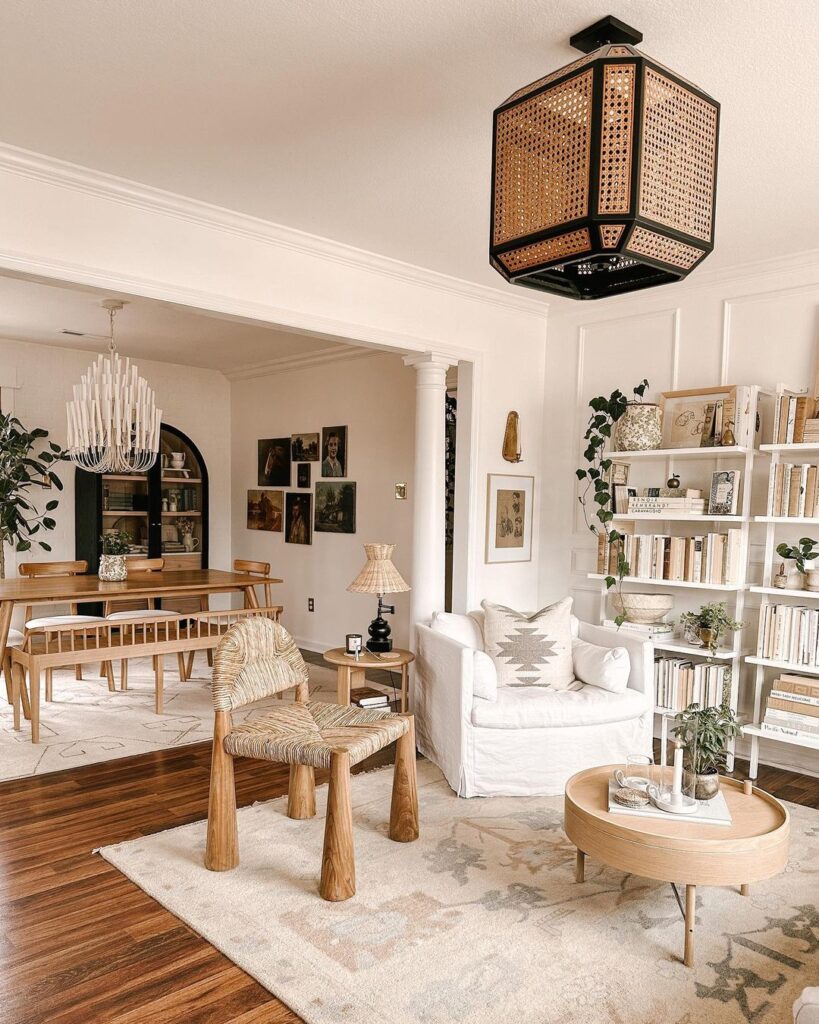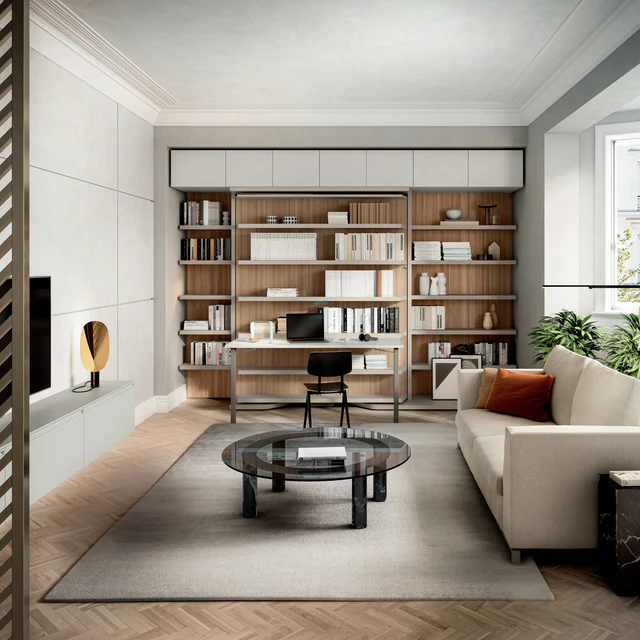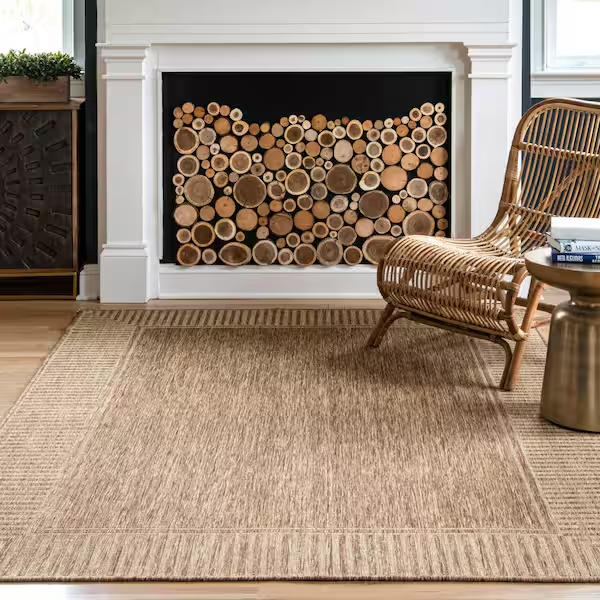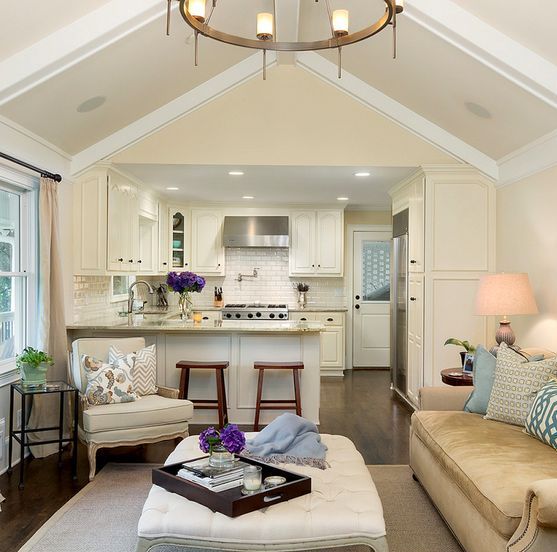Contemporary guides for decorating open floor plans consistently highlight the importance of defining functional zones through strategic furniture placement and area rugs to maintain flow without walls. They also stress a unified color palette and repeating materials across spaces to ensure visual harmony while subtly differentiating areas with accent hues or patterns. Layered lighting—combining pendants, floor lamps, and dimmers—is another recurring theme to both delineate zones and adjust ambience for various activities. Multifunctional and “floating” furniture pieces are championed for enhancing flexibility and circulation in expansive layouts. Finally, articles recommend incorporating architectural details like ceiling treatments and large mirrors to add warmth, define overhead zones, and amplify natural light.

Zoned In Style: Mastering Furniture Layout for Open Spaces
Creating a harmonious and functional open floor plan requires strategic furniture placement to define distinct zones while maintaining a cohesive flow. Begin by anchoring each area with appropriately sized rugs; for instance, a large rug can delineate the living room, while a different rug under the dining table sets that space apart . Arrange furniture to facilitate natural pathways and conversation areas—positioning sofas and chairs to face focal points like a fireplace or a media console can create inviting gathering spots . Incorporate multifunctional pieces, such as storage ottomans or console tables, which can serve dual purposes and help in subtly dividing spaces. Utilize vertical elements like open shelving or tall plants to act as visual barriers without obstructing light or the sense of openness. Lighting also plays a crucial role; employ pendant lights over dining areas and floor lamps in living spaces to define zones and add ambiance . By thoughtfully arranging furniture and incorporating these elements, you can create a dynamic and organized open-concept space that caters to various activities and aesthetics.
Flow & Function: Crafting Cohesive Color Schemes in Open Plans
Creating a cohesive color scheme in an open floor plan is essential for unifying interconnected spaces while allowing each area to express its unique function. Begin by selecting a neutral base color—such as soft white, warm gray, or beige—that flows seamlessly throughout the space, providing a calming backdrop and enhancing the sense of continuity. To define individual zones without disrupting harmony, introduce one or two accent colors strategically across different areas; for instance, navy cushions in the living room, navy bar stools in the kitchen, and a navy centerpiece on the dining table can subtly delineate spaces while maintaining cohesion. Employing the 60-30-10 rule—allocating 60% to the dominant color, 30% to a secondary hue, and 10% to an accent shade—ensures a balanced and visually appealing palette. Repeating patterns and textures, such as similar rugs or throw pillows, further ties the spaces together. Additionally, maintaining consistent flooring and trim colors throughout the open plan reinforces unity and flow. By thoughtfully applying these color strategies, you can create a harmonious and inviting open-concept home that balances functionality with aesthetic appeal.


Light It Up: Layered Lighting Strategies for Open Concepts
In open-concept homes, layered lighting is essential to create depth, define functional zones, and enhance ambiance. Begin with ambient lighting—such as recessed lights or ceiling fixtures—to provide general illumination throughout the space. Next, incorporate task lighting in specific areas: pendant lights over kitchen islands, under-cabinet lighting for countertops, and floor or table lamps in reading nooks ensure adequate lighting for activities . Accent lighting adds visual interest and highlights architectural features or artwork; consider wall sconces, track lighting, or LED strips to draw attention to these elements.
Beyond Walls: Multi-Functional Furniture for Flexible Living
In open-concept living, multi-functional furniture is essential for creating adaptable and efficient spaces. Modular sofas, for instance, can be reconfigured to suit various activities, from lounging to hosting guests, and often include hidden storage compartments for added utility. Foldable wall-mounted desks provide a workspace when needed and can be tucked away to free up floor space, making them ideal for home offices within open layouts. Storage ottomans and benches serve dual purposes by offering seating and concealed storage, helping to maintain a clutter-free environment. Nesting tables and stackable chairs can be easily stored when not in use, allowing for flexibility in accommodating guests or changing room functions. Additionally, room dividers with built-in shelving can delineate different zones within an open floor plan while providing extra storage and display options.


Ceiling to Floor: Architectural Accents That Define Your Space
In open-concept homes, architectural accents from ceiling to floor play a pivotal role in defining distinct zones without the need for walls. Ceiling treatments, such as coffered designs, wood beams, or varying paint colors, can visually separate spaces while adding depth and character. For instance, a coffered ceiling over the dining area can create a sense of intimacy, distinguishing it from adjacent living spaces. Similarly, incorporating crown moulding or baseboards can subtly delineate different functional areas, enhancing the overall aesthetic and flow of the space. Flooring choices also contribute to spatial definition; using different materials or patterns, like transitioning from hardwood in the living room to tile in the kitchen, can signal a change in function while maintaining visual cohesion.
Rug Rules: Grounding Your Zones with Style and Substance
Area rugs are essential in open-concept homes for defining distinct zones, adding warmth, and enhancing aesthetics. Placing a large rug under the dining table or seating area anchors the furniture, creating a sense of purpose and cohesion. Choosing rugs with complementary colors and patterns ensures visual harmony across different spaces. Additionally, rugs can improve acoustics by absorbing sound, making the environment more comfortable. By thoughtfully selecting and positioning area rugs, you can delineate functional areas while maintaining a unified and inviting atmosphere.


No Responses